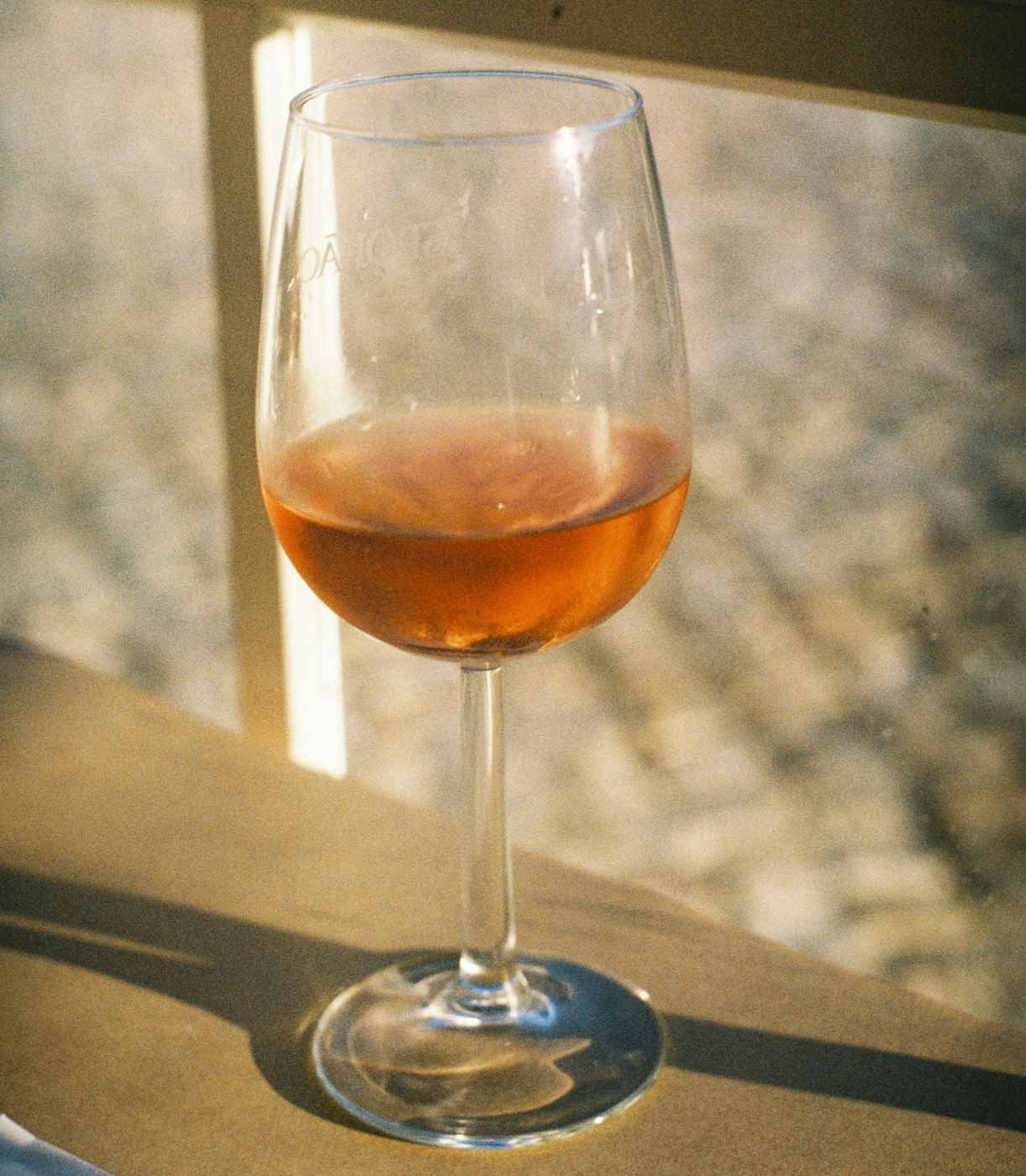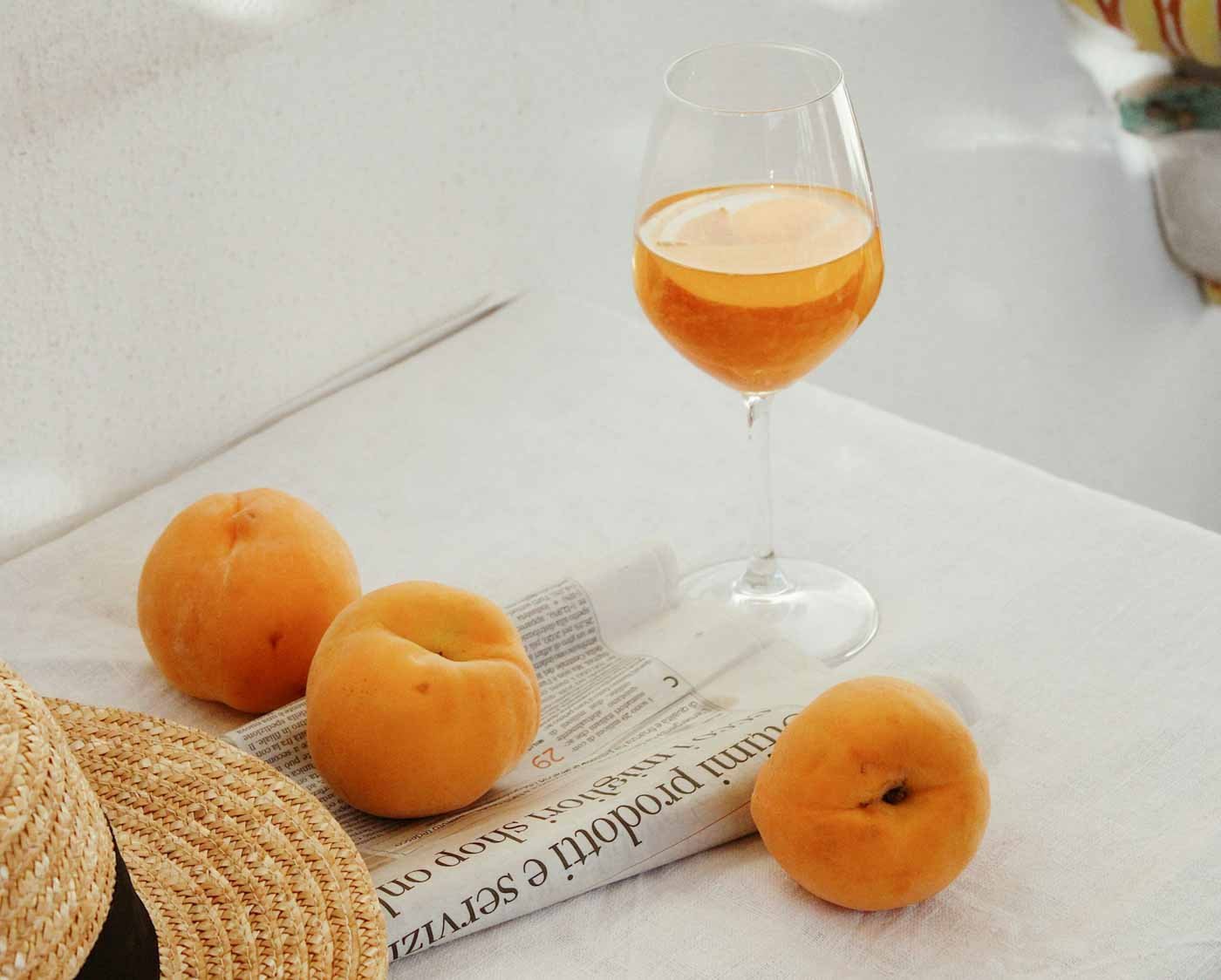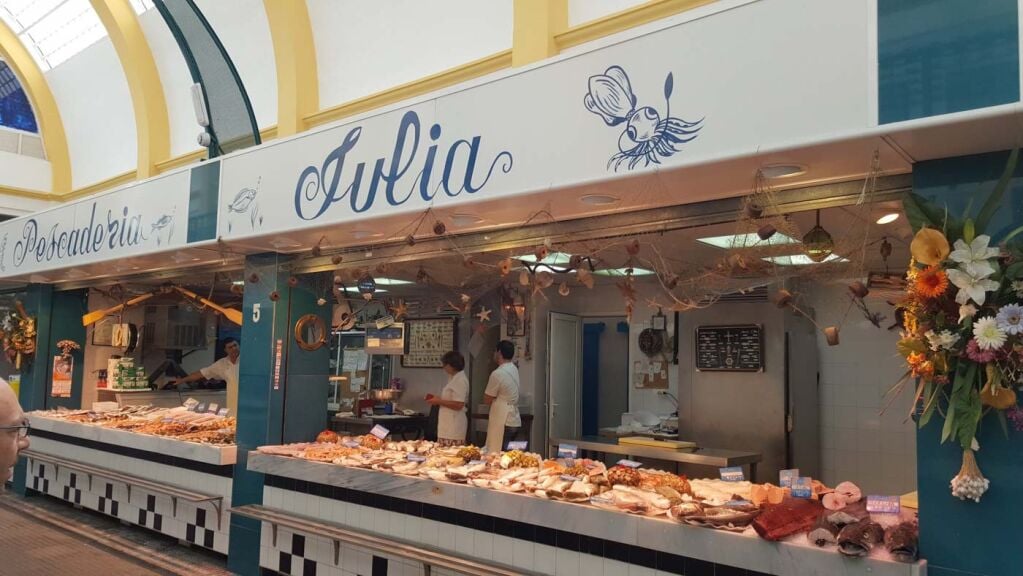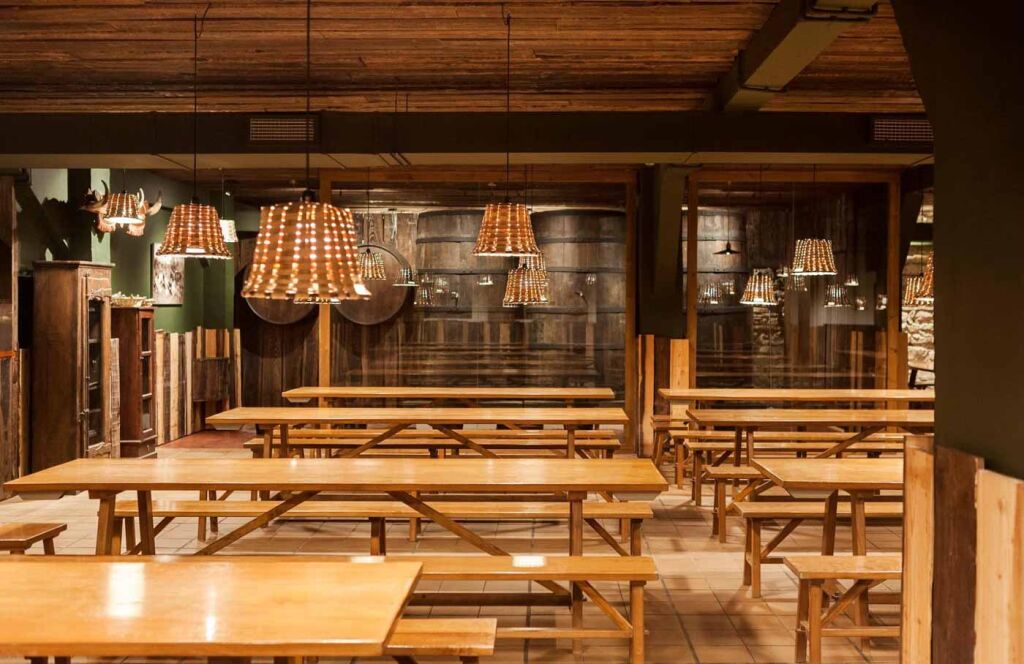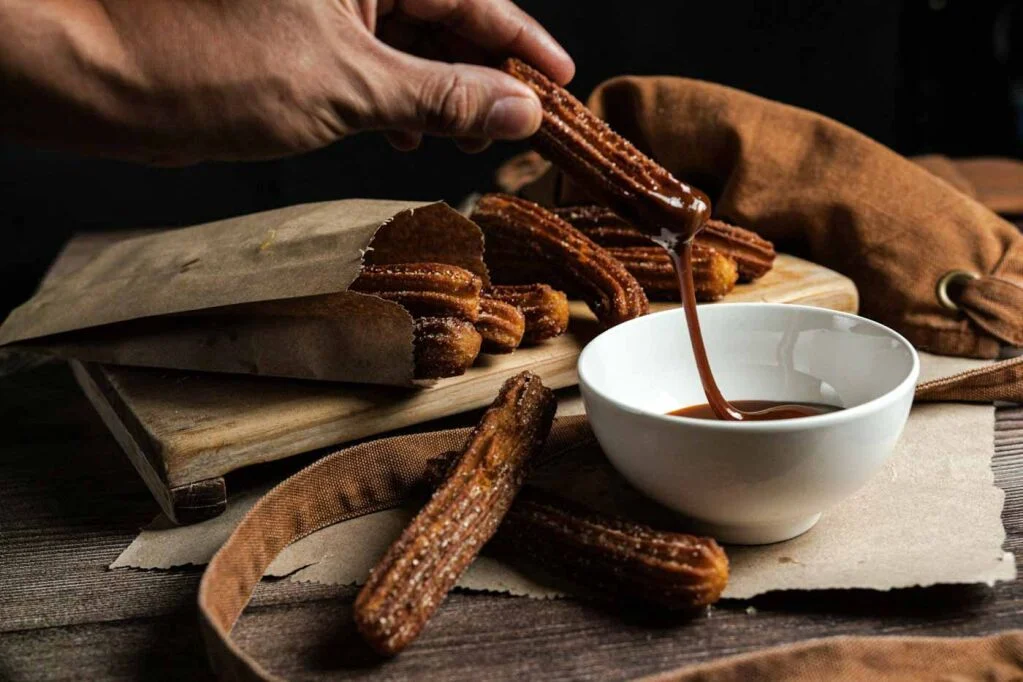Seville is known for its super sour oranges, and these pair beautifully with sweet white wines from the nearby Huelva region. Although both styles of orange wine can be found in bars across the city, this aromatized version is a must-try and is unlike anything you may have tried on my Spain food tours in the past.
What Is Orange Wine and Why Is It Popular in Seville
If you’re an avid wine drinker, you’ll likely know orange wine as a minimal intervention, skin-contact variety with a distinctly amber appearance. However, in Seville, orange wine is a little different — specifically, a white wine macerated with orange peels, giving it a sweet, citrusy flavor that has become a local favorite.
Historical and Cultural Roots of Orange Wine
Before we go any further, it’s worth diving into the cultural and historical context of this beloved wine.
Despite its name, Seville orange wine actually originates from Huelva, which lies just an hour west of the Andalusian capital. Wine has been grown here for centuries, while Seville’s revered oranges have been a signature crop in the area since the 900s, having been introduced to southern Spain by the Moors.
These particular oranges are far too bitter for regular consumption, so over time, residents began using them to make marmalades and to flavor wine. Since then, these fruits have become symbols of the wider Seville region. When they’re in season from December to February, both the oranges and the wines are the focal points of many festivals and cultural celebrations.
How It’s Made: Ingredients, Methods, and Artisan Techniques
The key to authentic Seville orange wine is getting the production methods and ingredients just right. You might find that there can be some regional variations, but most recipes require a base of sweet Huelva white wine and macerated orange peels.
This mixture is then placed in an oak barrel and is topped up with younger wines at specific times to ensure the final product has a balance of youthful and aged flavors. Select recipes may also incorporate other ingredients, including sherry, other citrus fruits, and sugar.
Conversely, the other style of orange wine is made by keeping the skins and stems of white grapes on the fruit during the fermentation process. Doing so leads to the extraction of color, giving the wine its namesake color. In essence, typical red wine techniques are used but with white grapes instead.
Flavor Profile and Key Characteristics
If you’re new to this much-loved beverage, this overview of the characteristics of Seville orange wine will give you an idea of what to expect.
As you may have guessed, the wine has a striking orange color. Depending on the exact blend and techniques used, it can be a bold shade of orange or a more muted amber tone.
Before you take a sip, be sure to take in the wine’s bright aromas. On the nose, it has a gorgeous citrusy fragrance, often accompanied by hints of dried flowers, honey, and fresh herbs.
The overall flavor profile is far from your average wine, with a warm blend of bittersweet, spicy, and zesty notes. Some varieties may also boast toffee or caramel-like hues, which is fitting considering the wine’s smooth, slightly syrupy mouthfeel.
How and When Locals Enjoy Orange Wine
This iconic Spanish orange wine can be enjoyed at pretty much any time of day (though you won’t find many people sipping it in the early hours of the morning!), but it’s most commonly served chilled or with a few ice cubes as an aperitif or digestif. As such, it’s often considered a tasty add-on to a meal.
For a truly local experience, team yours with a selection of tapas plates, specifically those that include aged cheeses or cured meats. Those with a sweet tooth will also find this wine works well with desserts as it complements the richness of chocolate or caramel-based treats.
Consumer Experiences and Wine Enthusiast Reviews
There are a slew of positive consumer experiences and glowing reviews out there, so you don’t just have to take my word for how yummy Seville orange wine is!
When well-made, Seville’s answer to orange wine is praised for its unique, complex flavor and harmonious fusion of sweet and savory notes. Furthermore, this wine can only be crafted in Huelva, making it a one-of-a-kind product that appeals to wine aficionados seeking something different from more typical wine styles.
Serving Tips and Ideal Food Pairings
Below, I’ve listed some of my top serving suggestions and food pairings to elevate your Seville orange wine experience. This is by no means an exhaustive list, but it’s a great place to start if you don’t know where to begin.
- Seville orange wine is at its tastiest when served chilled or slightly below room temperature but not so cold that the flavors are muted.
- Enjoy your wine at a relaxed pace, sipping it rather than gulping it down in just a few mouthfuls.
- Balloon-style wine glasses are best, as they allow you to take in the aromas with each sip.
- Team your wine with foods that have pronounced flavors. When it comes to savory options, nutty cheeses, salty seafood, and cured meats work best, while sweeter alternatives like chocolate or caramel cakes and citrus-imbued tarts are also delicious pairings.
DIY Recipes and Home Versions of Seville Orange Wine
While I highly recommend sampling Seville oranges made by popular brands and notable producers, you might also be interested in trying out some recipes and preparing some at home. Nevertheless, it’s worth noting that unless you have access to oak barrels, recreating the traditional recipe may be challenging!
A simple, contemporary method is to combine white wine and a strong alcoholic spirit, such as vodka, with sugar in a sturdy container. Once the sugar has dissolved, add your Seville oranges, along with other citrus fruits if desired, and let the mixture rest in a cool, dark place for approximately 30 days.
Final Thoughts: Why Orange Wine Captures Seville’s Essence
For wine lovers and culture connoisseurs alike, trying a glass or two of Seville’s orange wine is a non-negotiable. Not only are these wines undeniably delectable, but they’re steeped in tradition and massive sources of pride for Sevillanos!
Sources:
Eating Europe. (n.d.). Spain Food Tours. Eating Europe. Retrieved July 4, 2025, from https://www.eatingeurope.com/spain/



